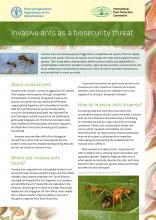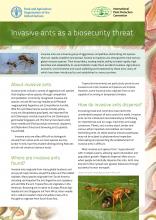Guam invasive species management plan interim 2017-2019: interim

BRB
Available Online
The 2017-2019 Interim Guam Invasive Species Management Plan (GISMP) expresses the overarching goals and priorities of the Guam Invasive Species Council (GISC or Council). The Guam Invasive Species Act of 2011 (Public Law 31-43) established the Council as Guams lead entity in coordinating with local, regional, national, and international jurisdic¬tions in the fight against alien invasive species. Although the GISC is in its infancy stages of organization, it draws from the collective knowledge, past research, and progress of its members in establishing the Councils goals and priorities. Priorities and goals identified in this plan reflect current and near-term resources, member capabilities, and status of certain invasive species. Recommendations contained in the Regional Biosecurity Plan for Micronesia and Hawaii (RBP), the 2016-2018 National Inva¬sive Species Councils Management Plan, the Regional Invasive Species Council (RISC), and various stakeholders were considered in the development of this plan. The Council also considered developments under the purview of the Hawaii Invasive Species Council and its 2015-2020 HISC Strategic Plan.








